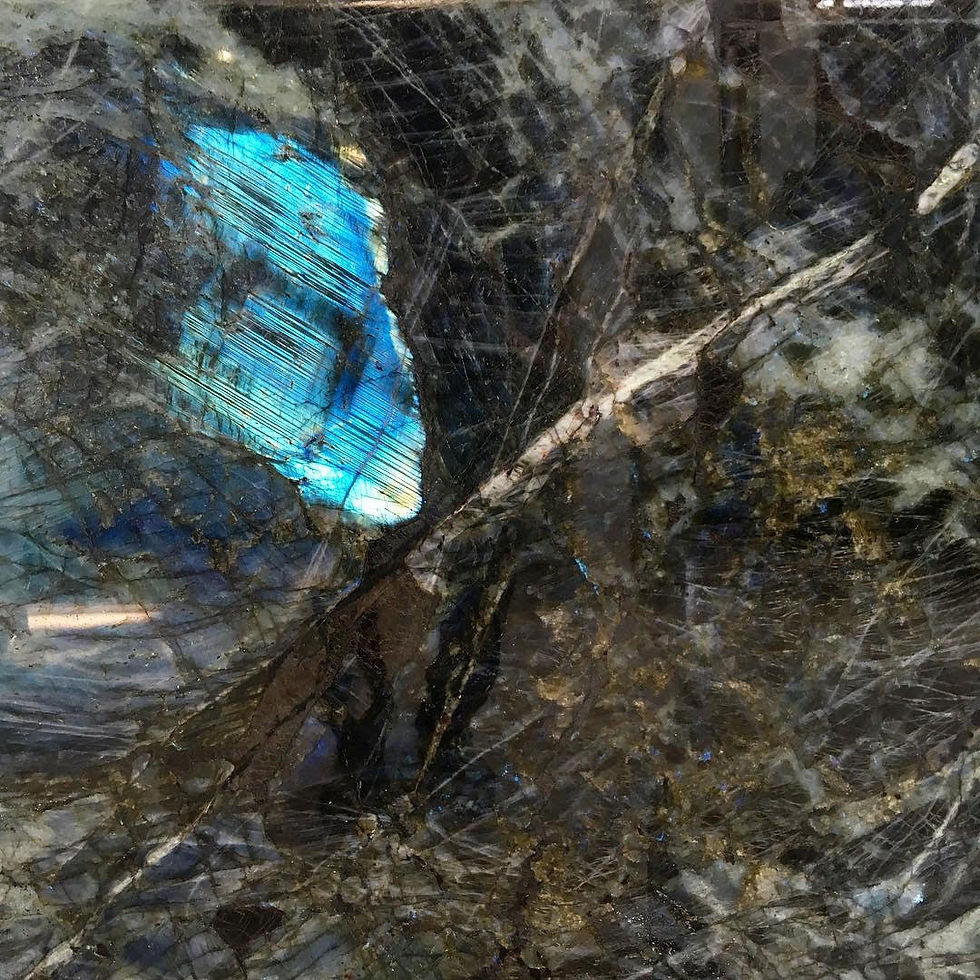Natural Stone Finishes
- Curated By Callisto
- Jun 17, 2020
- 3 min read
When it comes to selecting natural stone, not only is it important to understand the type of stone, you must also understand what the surface finish will look like and how it will react. Natural stones used for furniture design and décor are all durable. Think of all the ancient monuments, roads, temples, sculptures in Europe and in monumental buildings across North America. These are strong materials, formed by the Earth, quarried, and transformed for commercial use. The type of stone dictates how it will react overall to exterior conditions, whereas the surface finish determines how it will wear over time and develop its patina. The surface finishes are created by an industrial sanding process, and either loosens or tightens the pores of the stone. Some of these finishes can also be achieved by hand, or with different techniques.

Polished: Glossy and reflective finish, which enhance colours, markings and veins of the stone. Only applies to Granites and Marbles. Enhances the stone’s features, especially with marble, giving a refined look. Scratches may appear more visible, as well as surface dirt and fingerprints, but is easy to wipe and keep clean.
Honed: Satin and smooth finish, less reflective of light and is matte or very little gloss. Applies to all stone types, some may be more reflective than others. Enhances the stone’s features, but with a dull finish. Scratches may appear less visible, and surface dirt sometimes less noticeable while a smooth surface allows for ease of maintenance.

Leathered: Subtle surface texture, in satin finish. Typically applies to Granite and Marble. Enhances the structure of the stone, where physical texture mostly appears alongside veins and different mineral compositions. The texture is smooth to the touch and adds depth to the stone, making it seem more natural. This finish is popular when searching for a rustic look and feel, such as in the design of country homes, and outdoor applications.
Brushed: Subtle textured surface similar to leathered, created with industrial brushing techniques simulating natural wear over time. Typically seen on Marble and Slate. Texture is smooth to the touch and appears alongside natural mineral and vein differences in the stone.

Flamed: Coarse and irregular finish over the surface of the stone, created by applying intense heat. Typically applies to Granites and gives a worn out look and feel to the stone. This enhances the texture of the material and is somewhat rough to the touch, giving it a natural look that stands the test of time with little change. This type of finish is hard to clean since the surface is rough, however if the goal is to achieve a rustic worn out look, then this is a great option.
Tumbled: Antique finish achieved by tumbling the stones against each other in large drums. Typically seen with Marbles and Limestones. This technique wears the surfaces and edges of the stone, creating irregular shapes, crevices and texture. The edges are smooth to the touch and the stones appear older, and worn out. Mostly used in rustic, or older settings.

Natural Cleft: Irregular surface texture created by splitting the stone along its natural cleft, or divison, lines. Typically seen with Slate as they have a very linear cleft structure. This creates uneven surfaces and gives the impression the stones were simply taken from nature this way. Can lead to increased wear over time since the interior natural splitting structure of the stone is exposed.



Comments